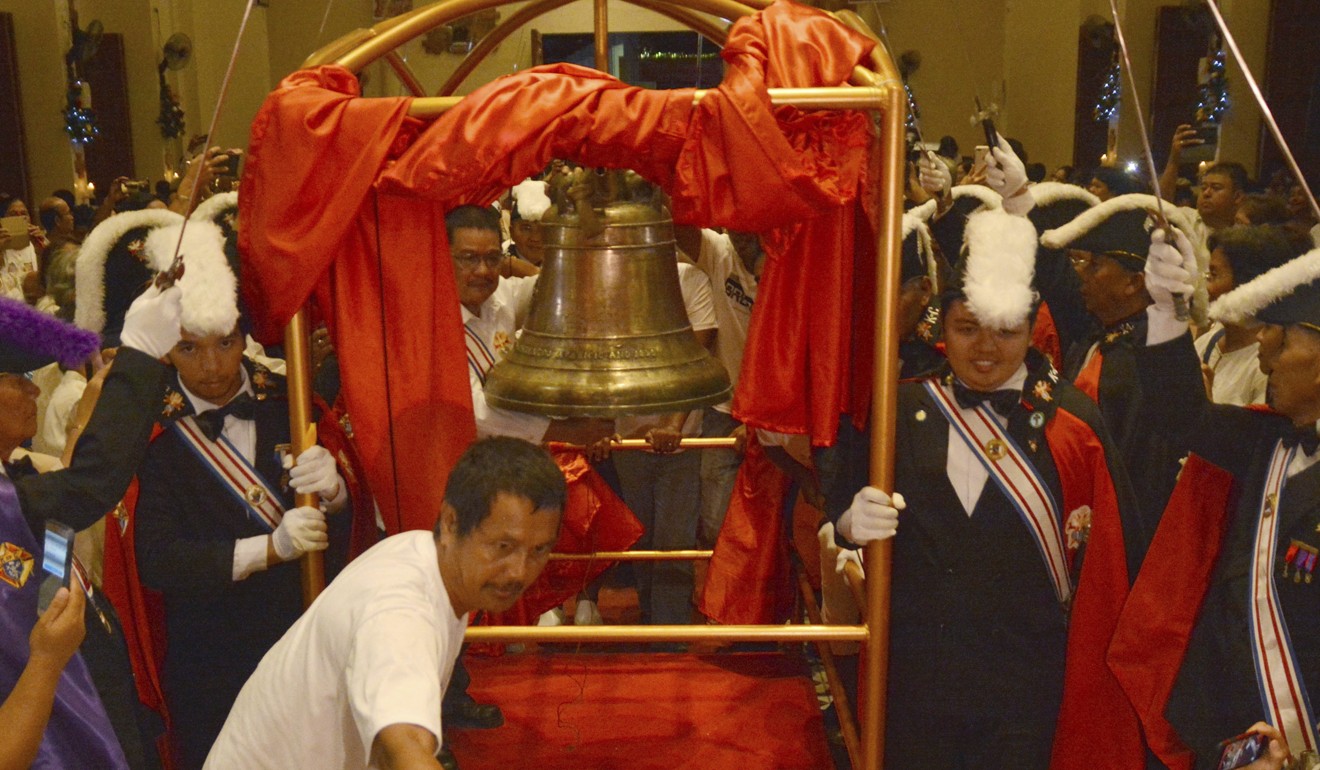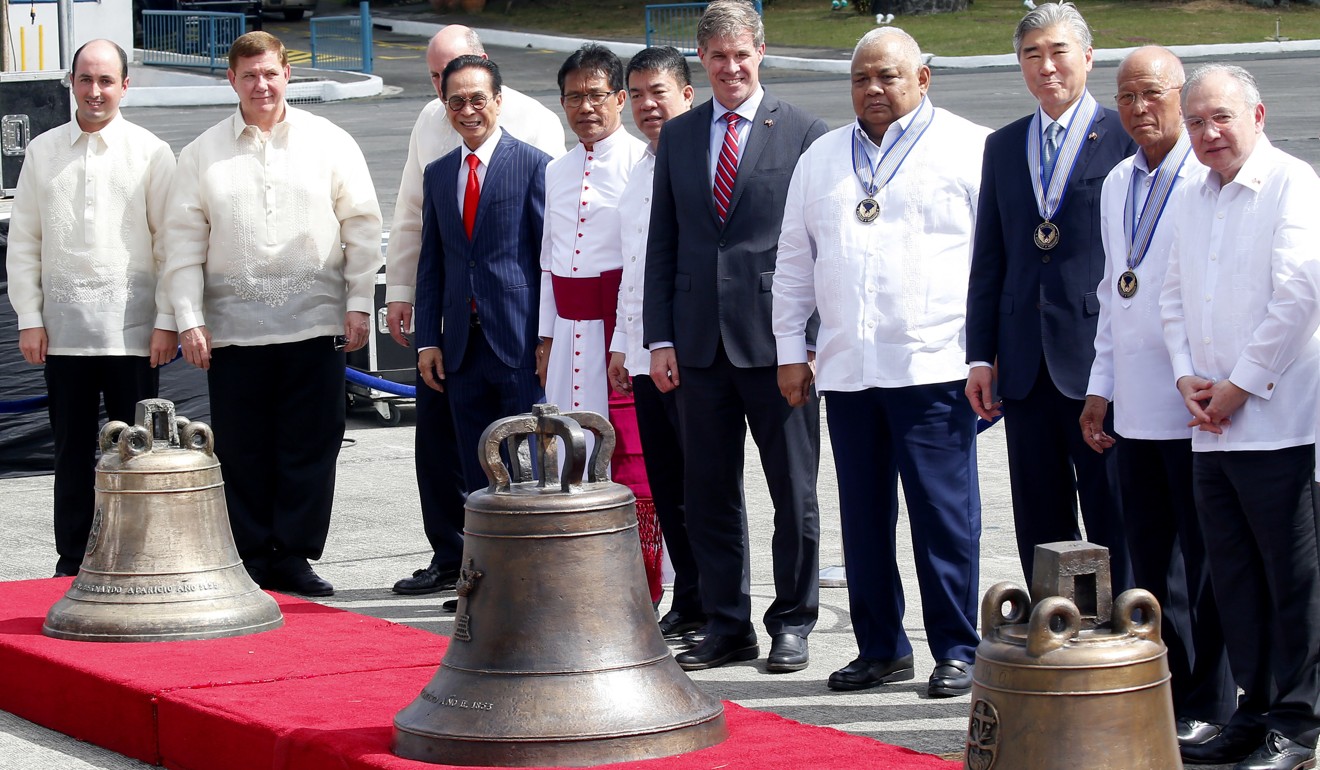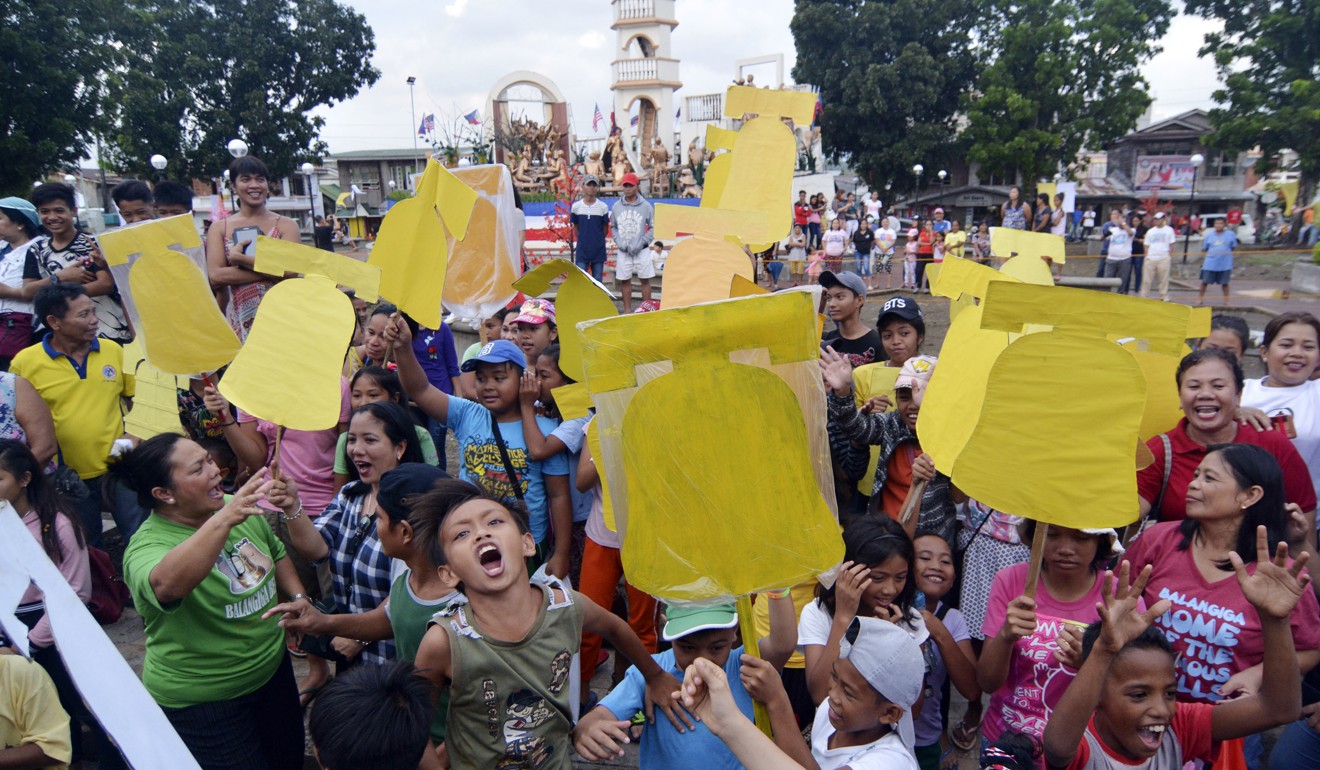How America’s return of the Balangiga bells paves the way for Rodrigo Duterte to visit the White House
- With a dark chapter of their shared history behind them, the US and the Philippines now hope to revitalise bilateral relations, Richard Heydarian writes

After more than a century, the United States has finally returned the iconic Balangiga bells to its rightful owners. The bells, which were taken as war trophies in 1901 by occupying American forces from a Philippine church, represented a particularly painful, though partly forgotten episode in Philippine-American relations.
The bells’ widely covered and highly emotional return marked a bittersweet moment for the two allies, which have been at loggerheads in recent years. Unlike any of his predecessors, the tough-talking Philippine president, Rodrigo Duterte, made the return of the bells a centrepiece of his anti-American tirades.
To Duterte, who has favoured warmer ties with China and Russia, the US lacks the moral ascendancy to question his human rights record. In Duterte’s view, Americans should instead repent for their historical atrocities against the Philippines, the first and only US colony in Asia.
Thanks to the concerted efforts of senior officials from both sides, the three bells are now finally back home in Balangiga town, in East Samar. With a dark chapter of their shared early-20th century history now behind them, the two allies hope to revitalise their bilateral relations for the 21st century.
As one senior Filipino official told the author, Duterte is now “seriously considering” his first ever official visit to the White House by the middle of next year, ushering in a thaw in frayed relations. Yet, the move would be unlikely to undermine Duterte’s efforts to pursue a more independent foreign policy for the Philippines.

Filipinos are arguably the most pro-American people on Earth. In an authoritative global survey in 2013, more Filipinos (85 per cent) expressed favourable views with regard to America’s role in the world than Americans themselves (81 per cent).
American colonial rule throughout the first half of the 20th century left an indelible mark on the Southeast Asian country. The upshot was what James Fallows called a “damaged culture” of dependency, with the US standing as the Philippines’ security guarantor and top economic partner for much of contemporary history.

As the Philippines’ democratic icon Benigno “Ninoy” Aquino lamented: “Almost half a century of American rule bequeathed to the Asian Filipino a trauma by making him uncomfortably American in outlook, values and tastes …”
It also meant a delirious collective amnesia vis-à-vis the brutal history of American occupation. The Balangiga bells are the most potent symbol of this dark past.
Following a surprise attack in September 1901 by pro-independence Filipinos in East Samar who opposed imperial Spain’s sale of the Philippine Islands to America, the colonial forces retaliated with indiscriminate barbarity.
In revenge for the death and injury of close to 70 American soldiers, Army General Jacob “The Monster” Smith then ordered the massacre of all Filipinos above the age of 10, turning the whole area into a “howling wilderness” of blood, murder and destruction.

Subsequently, the American troops took three bells from the Church of San Lorenzo de Martir in Balangiga as war trophies, having ransacked and destroyed much of the town and terrorised its residents with unspeakable brutality.
Two of the bells were sent to the former base of the US 11th Infantry Regiment at F.E. Warren Air Force Base in Cheyenne, Wyoming, while the other was placed in the US 9th Infantry Regiment in Camp Red Cloud, in South Korea.
As early as the 1950s, Filipinos, beginning with a Jesuit historian, began seeking the return of the bells, which stood as a testament to revolts against the area’s last Western colonisers.
The bells’ return seems to have provided a semblance of closure for Filipinos, but it is unlikely to dampen Duterte’s determination to seek greater independence from Americans in favour of warmer China ties
The matter, however, gained greater urgency when an anti-American leader pulled off a shocking electoral victory in the Philippines. In his second state-of-the-nation address, Duterte told American diplomats there: “Give us back those Balangiga bells. They are ours. They belong to the Philippines. They are part of our national heritage.”
The enraged Filipino president demanded, “Return it. It is painful for us.” His anti-American tirades went hand in hand with the rapprochement with China and Russia, which had begun sending warships to Philippine ports for the first time in contemporary history. Duterte also never passed up the chance to express his “love” for China, which he described as no less than his “protector”, while praising Russian President Vladimir Putin as his “idol”.
Sensing the urgency of reviving frayed ties, the American defence establishment, led by Defence Secretary James Mattis, pushed for the bells’ return. With the timely removal of internal “legal hurdles”, namely the expiration of federal legislation that prevented the return of war memorial objects, Washington was now able to work with senior Filipino officials – who were eager to repair bilateral ties – on the return of the bells.
During the bells’ arrival ceremony, the Philippine defence chief, who had previously served as a Washington diplomat for almost a decade, expressed his hopes for a revitalised alliance henceforth: “It’s time for healing, it is time for closure, it’s time to look ahead as two nations should with a shared history as allies.”
The return of the bells seems to have provided a semblance of closure for Filipinos, but it is unlikely to dampen Duterte’s determination to seek greater independence from Americans in favour of warmer ties with China. At the very least, however, it has, for now, contributed to lesser diplomatic tensions and may likely precipitate the Filipino president’s first official visit to the White House next year.
Richard Heydarian is a Manila-based academic and author